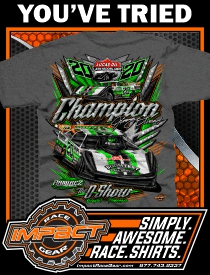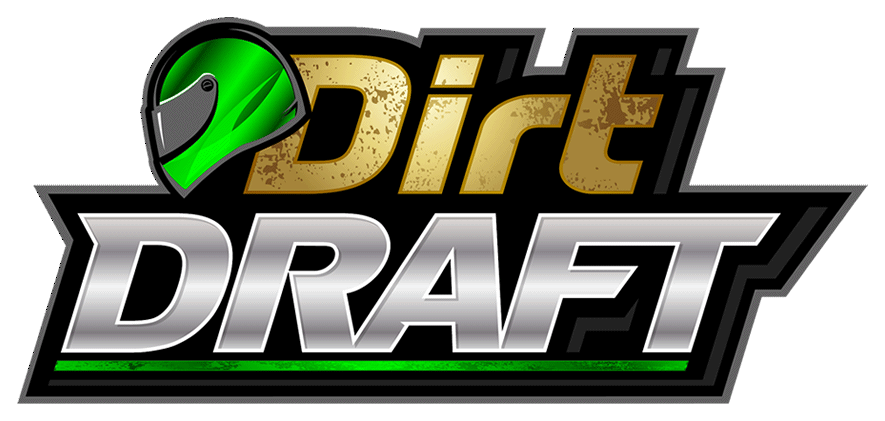
DirtonDirt.com exclusive
Council mandates safety, but some falling off pace
By Kevin Kovac
DirtonDirt.com senior writerFew people disagree with the Unified Dirt Late Model Council’s off-season efforts to improve safety by drafting a detailed set of technical and driver protection rules. There isn’t overwhelming consensus from all corners of the Dirt Late Model world, however, when it comes to following those mandates in 2017. | Blog: Low-budget safety upgrades
While the Council’s participating organizations — the World of Outlaws Craftsman Late Model Series, Lucas Oil Late Model Dirt Series, UMP DIRTcar, Lucas Oil Midwestern LateModel Association, Fastrak-affiliated Ultimate Super Late Model Series and North Carolina promoter Ray Cook’s three Schaeffer Oil-sponsored tours (Southern Nationals Series, Spring Nationals and Southern Nationals Bonus Series) — adopted the safety rules for ’17 as soon as they were announced in mid-November, as the new season kicks into high gear with the arrival of Georgia-Florida Speedweeks, full implementation across the entire division hasn’t yet been achieved. There remain many series and tracks that won’t require entrants to meet the Council’s safety guidelines, fearing that the cost for lower-budget regional and local teams to make their cars compliant might be too much to pin on them in a single off-season.
The group of race organizers taking a more patient approach to the safety revolution includes Southern All Star Series director Lynn Acklin, a veteran official who is all for protecting drivers to the fullest extent but, as the head of a traveling series dependent on rank-and-file racers to fill fields, is also cognizant of how much he asks racers to invest.
“I’ve talked to those (national) series people, I’ve talked to Kelley (Carlton of the Ultimate Series) and Ray (Cook), and I just told them that right now I’m not gonna make it a mandatory deal,” Acklin said of the Council’s rules that require the installation of an on-board fire-suppression system, fuel cells that meet or exceed FIA/FT3 specifications, relocated battery connect switches and personal safety gear (full-containment seats, head-and-neck restraints, fireproof gloves). “I’ve had too many phone calls about it because of the cost factor. I know there’s different prices for stuff, but you’d be surprised at the amount of phone calls that I have received ever since this has come out, and what I was asked at PRI (December’s Performance Racing Industry Trade Show in Indianapolis).”
From the weekly track side, Denise Hollidge, who manages Winchester (Va.) Speedway and Potomac Speedway in Budds Creek, Md., for promoter Greg Gunter, offered a popular reasoning for why her ovals won’t enforce the safety rules this year as well.
“It’s wonderful because it’s about safety, and we’re all about safety,” Hollidge said. “And actually, a lot of our guys are doing it, but we also just felt a lot of our guys just can’t afford to make those changes at one time. We don’t want to punish them and force them to do that immediately. Greg said, ‘It’s hard to ask everyone to put that kind of money out to make it mandatory.’ ”
Too much, too soon?
Ask Acklin if he thinks the timetable from introduction of the new safety rules to adoption for ’17 was too short and he will nod in agreement.
“The guys who race for me are working guys and they have to go about this in segments to do it,” said Acklin, whose 2017 Southern All Star schedule (26 races) is his busiest in nearly a decade. “They have to plan to do it. If you start requiring them to spend money … it’s just like, everybody jumped on this no-grooving and no-siping (tire) rule after they done it at the World 100 (in September 2016), and I talked to my guys and they don’t want us to do it right now because a lot of them have too many grooved and siped tires to still use up.
“I go to Talladega (Ala.) Short Track four times a year and I asked (track promoter) Lynn Phillips the other day, ‘Are you gonna enforce the new Late Model safety rules?’ He’s one of the few tracks I go to that still runs Supers on a weekly basis, and he said, ‘These guys down here can’t afford to switch all that stuff at one time.’ I said, ‘I agree with you. I’m not doing it either.’ We had already had that discussion earlier, but I just asked him again to make sure because, if we go ahead and do it and then go to Talladega Short Track, that might cost us race cars.
“It’s probably something that we eventually go to, but not right now,” he added. “I will take them rules and incorporate them into mine and just say they’re recommended and let it go with that. I’m all for safety stuff, and I’m telling everybody, ‘You can put this stuff on your car and you can still race with me,’ but these other guys who can’t do it right now, I’m still gonna let them race. I’m not gonna turn anybody away because they don’t have everything.”
Hollidge has much the same outlook on the rules for Winchester and Potomac, noting that a longer phase-in period works better for her clientele rather than putting a potential price tag of $5,000 — according to several sources, an average estimate of what it would cost a team that starts from scratch to become compliant — on their shoulders.
“A lot of guys have budgets and say, ‘This is the X amount of dollars I have to spend,’” Hollidge said. “Well, when you gotta look at a new seat and a new fuel system and fire-suppression systems, you’re looking at a lot of money that can be hard to come up with at one time.
“Greg and I have talked about saying, ‘OK, guys, by 2018, it’s gonna be mandatory.’ It’s not only safer for them, it’s safer for the racetrack too. We just want to give them more time to budget for it.”
Multi-time crown jewel winner Jimmy Mars of Menomonie, Wis., is a high-profile driver and chassis builder (through his Mars Race Cars and MB Customs business) who wonders if the safety rules have been implemented too quickly. Overall he thinks that the safety rulings are good on paper, but he doesn’t think there’s been enough testing to confirm those are the best decisions for real-world, practical usage.
“Some of it’s good,” Mars said, “some of it’s too fast.”
Mars asserted that “nobody wants anybody to get hurt,” but he called the council guidelines “knee-jerk decisions” that make it appear the sport is “pacifying” those calling for stricter safety measures in the wake of two fatal incidents involving Ohio drivers in 2016 (Charlie Floyd perished in a fiery April accident and Shane Unger died after hitting Eldora Speedway’s wall with his car’s left side during a World 100 heat in September) and several other notable injuries suffered by Dirt Late Model racers.
“There needs to be more of a transition on doing it rather than, ‘Bam! We’re doing it,’” Mars said, pounding a fist in his hand. “That’s what makes me nervous on car counts.”
Mars said he would prefer to see more research on how these safety improvements would actually work. He thinks checking the installation of current fuel cells, seats and batteries (that could spark a fire) would go a long way toward solving the problems without adding any rules.
Members of the Council, meanwhile, are in solidarity behind the immediate adoption of the safety rules. There was some discussion among the Council — a group formed one year ago that includes more than a dozen series directors, chassis constructors, engine builders and parts manufacturers — about a slower phase-in of the mandates that would establish partial compliance by mid-season 2017 and full compliance for ’18, but ultimately it was decided to require the rules this season.
Of course, two of the major facets of the rules package — the fire-suppression system and fuel-cell specifications — were being discussed well before the Council agreed on them in November. The Lucas Oil Series made it clear last spring that such rules would be coming to Dirt Late Model racing.
“For us, we started this in May of last year, saying that we were gonna make these two changes for fuel cells and fire-suppression equipment mandatory for 2017,” Lucas Oil Series director Rick Schwallie said. “Any of those teams that competed with us last year from May on, and we ran into non-compliant equipment (during inspection), they weren’t told they couldn’t race with us but we did tell him this was the movement that was coming for next year (’17).
“November was when we put out the official word of what we were requiring (under the Council’s safety rules), but again, we told everyone in May that a fire-suppression system would be required (for ’17). We just didn’t know how far we were going with that, and we really didn’t know until we knew we had the full support of the whole Council in agreement that we were going to require a 10-pound bottle.
“That’s what allowed us to take it further, as far as we could. If we were just doing this ourselves we probably would’ve just done a 5-pound bottle, but really, at the end of the day, we’re looking to just change the DNA of what a Dirt Late Model is a little bit — and that’s now a Dirt Late Model has to have a 10-pound bottle on it. That’s ultimately what we’re looking for.
“It’s gonna take a little bit of time, and there’s gonna be bumps in the road, but all in all, I feel like we’ve given a fair chance of notifying them that they needed to have this equipment. Like anybody, though, a lot of people don’t do anything until they have to.”
WoO Late Model Series director Tim Christman acknowledged that the implementation period for the rules was short, but he does not believe the Council is asking too much of Dirt Late Model racers.
“I can see the argument (made by lower-budget competitors), but what’s the price you put on being safe?” Christman said. “Like a guy told me, ‘That fire-suppression system cost me the price of four tires (about $700). That’s it.’ ”
Will series car counts drop?
Both Winchester and Potomac hosted WoO events in 2016. They aren’t this season, largely because Gunter and Hollidge are uncertain how many of their regulars would skip such races because they won’t be compliant with the safety rules.
“I love the Outlaws, I love Tim Christman and we’d love to have them at both tracks,” Hollidge said. “But just as a business side of it, it’s just so hard to require all of our guys to make that investment (in safety rules) to run with the Outlaws.
“We said, ‘Let’s put the money on the line for the local and regional drivers who are supporting us weekly this year,’” she added, referring to unsanctioned Super Late Model miniseries events Winchester and Potomac will run this season with Georgetown (Del.) Speedway, Delaware International Speedway and Bedford (Pa.) Speedway. “We’ve teamed up with those tracks to try and look out for our local guys and see if they support some races that pay more and have points funds for them.”
Hollidge’s son, Dale Hollidge of Mechanicsville, Md., does have his Greg Gunter-owned Dirt Late Models compliant with the safety rules — in fact, he plans to enter the Feb. 18-19 WoO Winter Freeze at Screven Motor Speedway in Sylvania, Ga. — but understands the mindset of the local racers who could be shut out of attempting WoO, Lucas Oil and other series events by the safety rules.
“A lot of those guys are on a tight budget,” Dale Hollidge said. “Not everybody has the ability to spend the extra cost of a thousand dollars, or whatever it might be, to get all this stuff done. And it’s not like they all race with sanctions very often, so to them, it’s like, ‘Do I really need to spend the money just to race with those guys once or twice?’ That puts a lot of guys in question.”
Which makes observers wonder how car counts for the series running under the Council’s safety rules will turn out this year. All indications point to solid fields of at least 40 to 50 cars for upcoming Lucas Oil and WoO shows during Georgia-Florida Speedweeks — on par with last year’s entry lists — but will any drop off be noticeable when the tours visit regular Dirt Late Model tracks the rest of the year? Will regional tours struggle to draw drivers who typically help fill out the pit area?
The heads of the national tours are confident there will be no issues in the car-count category.
“The feedback that I’ve gotten has been very positive, to be honest with you,” said Christman, who currently has 51 WoO features scheduled for ’17. “It was almost shocking, how positive it’s been. The fuel cells and the (full-containment) seats, over 90 percent of the guys (who would likely run a WoO event) already have those, so it wasn’t that big of an issue really. The bolts on the wheel covers (another new rule), that’s a $2 part that you get a kit for. The fire-suppression system, really, was, and is, the biggest issue. But they all understand it’s in their best interest to have it, and I haven’t heard of one guy who wasn’t gonna come somewhere (for a series race) because of it.
“The only thing I’ve heard is that some people are having a hard time getting (a fire-suppression system because of high demand), but we’re working through most of those issues now. I think it’s been pretty well received.”
The Lucas Oil Series isn’t concerned about car counts either.
“Honestly, I don’t think the car-count thing worries us at all, mainly because we’ve been really proactive with this,” said Schwallie, who has a 55-race campaign set for the Lucas Oil Series. “Since Jason (Durham) has come on board (as the circuit’s new technical and race director), we’ve provided him call lists — for Speedweeks, for instance — that include anybody who participated with us the last three seasons at any of the three Speedweek venues. He’s still working on that list, but he’s 80 people into it, just calling them one-on-one, to make sure they have their equipment they need, that they’re aware of what we’re doing. That has produced a real positive reaction. First of all, most people are just really blown away that we picked up the phone to call them one-on-one, and secondly, it’s answered a lot of questions from them.
“We’ve started to get a few more questions from teams (about the safety rules) — not so much for Speedweeks, but more for the first few events past Speedweeks, like Brownstown (Speedway) guys and some others who have started calling and asking some questions. But we really haven’t heard a lot on that — surprisingly, too. I thought we would’ve heard more than we have, so I’m proud of where we’re at with this right now.”
Seconding Schwallie’s comment, Christman noted the importance of communication in incorporating the new rules into the series landscape. He admitted that there was an unnecessary level of concern about the rules across the Dirt Late Model world when they were released in mid-November due to some confusion with the initial requirement for seats; the rule requiring SFI 39.2 certified seats was amended later, removing that spec in favor of mandating a “full-containment” seat with certain stipulations. (The Council plans to work toward an SFI spec for seats in the future.) There was also some uncertainty about exactly what constituted a fuel cell that met FIA/FT3 specifications.
“If I read those (initial) rules, I’d be scared too,” Christman remarked. “But once you pick up the phone and explain it to some of these guys and tell them, ‘OK, here’s the deal,’ they’re like, ‘So really all I have to do is get the fire-suppression system? Well, OK. No big deal.’
“The FT3 fuel cell has been in our rulebook for a long time, so that’s not a new rule. The (full) containment seat is obviously something new, but 80 to 90 percent of people already have those … the (initial SFI 39.2) rating was what scared people. Guys have been like, ‘Well, I don’t know if mine’s legal.’
“I’ve probably talked to a hundred different racers, and once you explain it to them, they’re OK,” he added. “I think a lot of the problem comes when people don’t understand something, and then once they get it explained to them, then they’re fine with it.”
Barring problems with manufacturers fulfilling demand for fire-suppression systems or other mandated equipment, the series that have adopted the safety rules will expect full compliance from entries from opening night of 2017. However, UMP DIRTcar director Sam Driggers said he will institute a phase-in period of undetermined length for the racers at weekly tracks — the bread-and-butter of the sanctioning body — to bring their cars up to spec.
“For the most part we will enforce all the rules,” Driggers said when asked about enforcement of the safety mandates for weekly UMP DIRTcar-sanctioned events. “But with that being said, it will be on a driver-by-driver basis. We will see what each car has and then start working with them to get the cars up to the specs we require.
“In the weekly races, we would be sending over 50 percent of the cars home (because so many likely won’t immediately be compliant) and that’s just simply not a option for the tracks or the sport in general. We will get them there, but we have to be realistic on what we expect them to do and how soon they can do it.
“But this is not a free pass,” he added. “It’s a practical way to get this done without depleting our Late Model count, which will ultimately (bring) the same result in time.”
For the good of the sport
Regardless of one’s opinion, one thing the coming of the Council’s technical and driver personal protection rules has done is trigger more conversation about Dirt Late Model racing safety.
“I think it’s a good thing,” said Dale Hollidge, who ordered a batch of 10 SafeCraft fire-suppression systems after the PRI show for racers in his area who contacted him. “There’s some guys who like to fight it and say, ‘Hey, it’s an extra cost,’ but this is something that’s good for the sport. Like with the seats … 10 years ago when I started (racing), I went to Randy LaJoie at a motorsports show and I wanted to buy one of his (Joie of Seating) seats. Of course, at the time, I was a young kid, and I was like, ‘Man, that’s a lot of money for a seat.’ I’ll never forget what he told me: ‘You mean to tell me that your life is not worth the cost of this seat?’ I had to sit there and think about that, and I said, ‘Well, I guess he’s got a point.’ Maybe I can buy a few less parts here, or a few less things there, but a high-quality seat is something that I definitely need to have, and I’ve had them forever.
“In my opinion, everybody should already have a full-containment seat … that would be the No. 1 priority. And, of course, fire is everybody’s fear. It’s very unpredictable. You never know what situation you’re gonna be in if you catch on fire. You might be upside down or whatever it may be. So I see it as very beneficial to have a fire-suppression system. Anything is better than nothing.”
Acklin’s Southern All Star tour might not be adopting the new rules, but the general discussion will certainly prompt him and his staff to be ever more vigilant this season and, at every turn, encourage teams to go with the Council’s recommendations.
“We’re gonna do more safety checks,” Acklin said. “I have talked to my officials about that. We’re gonna look at seat belts, seats, make sure lead’s mounting right, stuff like that. We’re just gonna take it a step further than last year.
“The guys that don’t race with a fuel bottle … what are you gonna tell them? I’ll say, ‘It’s you in that race car, it’s not me. If you ain’t got a fire bottle in there, you ought to get you one. I’m not gonna make you get one, but you need to look at getting one.’ At some point during this, the driver has to take responsibility for his own safety, too.
“The way I look at it, this is gonna be a trickle-down,” he added. “Them guys up there that have them parts now, they’re gonna be getting rid of that stuff down the line and it will eventually get down to where all the cars are alike (and compliant).”
In conjunction with the safety rules, Acklin said he would like to see the speed of today’s Dirt Late Models addressed.
“To me, the cars are going too fast,” Acklin said. “We’ve got the bodies so big and so wide, the cars are just too stuck to the track.”
Mars, meanwhile, has plenty of thoughts on the safety issue. He told DirtonDirt.com that he’s skeptical about the effectiveness of fire-suppression systems (for instance, can the dusty environment Dirt Late Models operate in cause any problems with the system’s operation?), he “would feel way more comfortable” with well-equipped fire trucks ready to fight gasoline fires at tracks (he specifically credits Florence Speedway in Union, Ky., for their proactive move to improve safety with its fire crew) and he feels that the way a driver’s head “pinballs” between the headrests of a full-containment seat on rough tracks can potentially cause concussions.
With the safety conversation underway, Mars is hopeful of even more in-depth discussion to determine the best route forward for the sport.
“I would like to see some testing done on an actual race car,” Mars said. “Put (a fire-suppression system) in there where a car is on fire and let’s put the fire out, and let’s see what we need to put a gasoline fire out. Let’s put people in a car and see the best escape route in a car before we make a rule, and make sure that everything fits to the environment of our race cars right now. We’re not NASCAR … we can’t be confined in a race car like what a NASCAR (driver) is. I would say our racing is more of a comparison to off-road truck racing or rally car racing than NASCAR, so maybe amend our rules to what they do, get some of their questions answered — why don’t they run full-containment seats? They’re using window nets (instead of right-side containment).
“I think that there needs to be more people getting together and getting some more suggestions from people who have been in this industry for a while that have experience with this stuff. All I want to do is, I would like to get together (with other industry people). I’ve got a lot of respect for Bob Pierce, I’ve got a lot of respect for Billy Moyer, (Rocket Chassis’s) Mark Richards. I’d like to get together with those people and and make a standardized safety deal … figure out what is the benefit and what really isn’t a benefit on our racing (safety standards), that’s what I think.”

















































